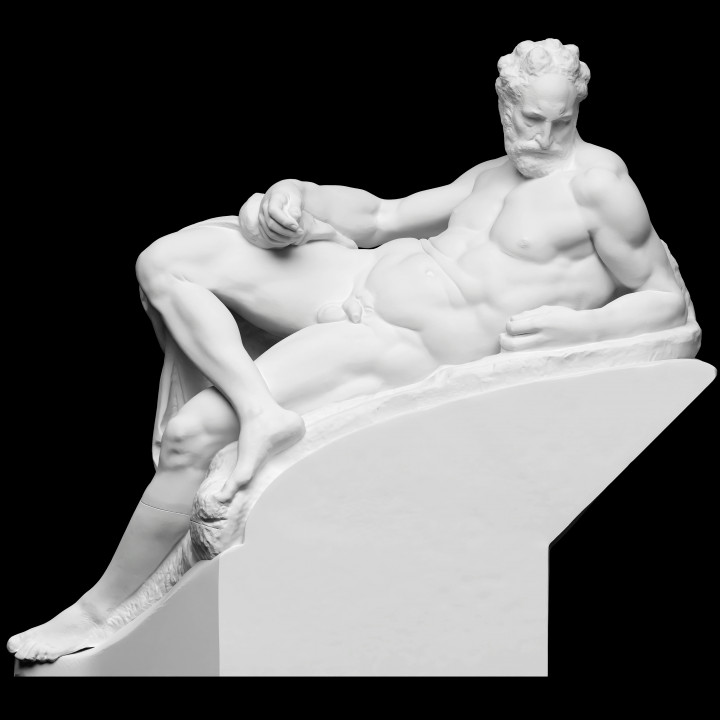
Allegory of Dusk
myminifactory
In the spirit of an allegory of Time, the deceased were coupled with figures representing the times of the day whose gender was determined by Italian grammar. The thoughtful figures of Dusk and Dawn are endowed with soft outlines as they gracefully adorn the edge of Lorenzo II de' Medici's sarcophagus. Dusk lies, featureless, with unfinished feet, hands and head. The principal inspiration for these reclining figures came from the river gods of Antiquity. This is one of four works created by Michelangelo that were known collectively as Times of Day. It is not possible to be entirely sure around when this sculpture was completed, but we do know with confidence that Michelangelo started it in 1524 as part of work on the wider project. It is dated as having been completed in 1534, meaning the work took around a decade though the sculptor would have been involved with many other projects during that time. He would court other patrons regularly, with it almost becoming an addiction to chase bigger and better projects throughout his lifetime. He would also find that in releasing high profile artworks, such as Pieta, that his reputation would spread even wider and allow him to pick and choose between an abundance of patrons and potential commissions. Some have argued that Dusk was influenced by elements of the Arch of Septimius Severus in Rome. There are mountain and river gods within that construction which may have come to the attention of Michelangelo whilst he was living in Rome. Many other theories have also been put forward with regards the Times of Day series more generally and there is little chance of a firm conclusion being drawn now, all these many centuries later. Dusk itself is also sometimes known as Sunset and this sculpture essentially creates a human form for this theme which is carefully crafted by Michelangelo with the aid of a number of assistants who helped out across the wider project. Such is the fame of Michelangelo and the years that have passed since his own career took hold, there have been a number of other historic artists who have actually studied his work over the centuries. For example, Tintoretto is known to have produced several drawings of Dusk whilst attempting to learn from the great master. He himself did not follow the standard path of art education and preferred to study the old masters in person, where ever the were situated across the country. Many of these drawings still exist today and provide a remarkable insight into how one great name would learn directly from another. The four items that made up this series were Dawn, Dusk, Day and Night and all remain in the same location today.
With this file you will be able to print Allegory of Dusk with your 3D printer. Click on the button and save the file on your computer to work, edit or customize your design. You can also find more 3D designs for printers on Allegory of Dusk.
